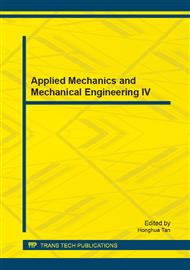p.499
p.505
p.511
p.519
p.524
p.530
p.535
p.543
p.547
Evaluation of Stress Shielding for Three Types of Implanted Femurs Based on Stress Distribution
Abstract:
This research investigates the stress distribution of the three types of implanted femurs using the finite element method analysis. The comparisons of the stress distribution between the implanted femursand the healthy femur were performed and the characteristics in the stress shielding of each casewere clarified. Since the load is transferred on the contact surface between the implant and the inner surface of the femur in the case of the total hip arthroplasty, the stress in the intertrochanteric zone (Gruen zone 7) become very small, and the phenomenon of the stress shielding is confirmed obviously. The stress distributions of the femurs afterthe resurfacing hiparthroplasty and the thrust plate prosthesis are about the same with that of the healthy femur, so, the possibility of the stress shielding is considered lower compared with the femur after the total hip arthroplasty. However, considering the stress concentration thatwill increase the risk of femoral fracture caused by the screws for the fixation of the implant in the thrust plate prosthesis, the resurfacing hiparthroplastymay beconcluded as the best method among these three types of implants to avoid stress shielding.
Info:
Periodical:
Pages:
524-529
Citation:
Online since:
October 2013
Authors:
Keywords:
Price:
Сopyright:
© 2014 Trans Tech Publications Ltd. All Rights Reserved
Share:
Citation:


